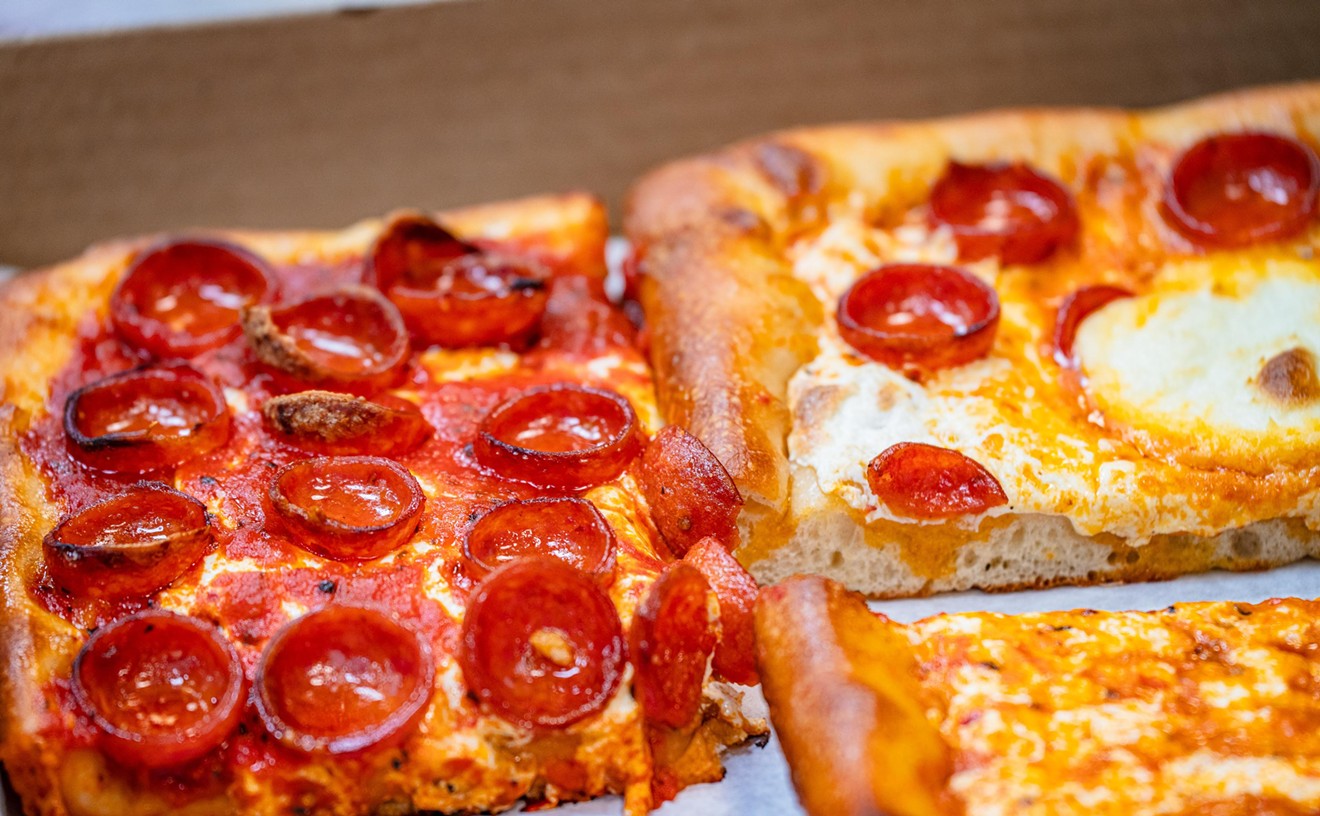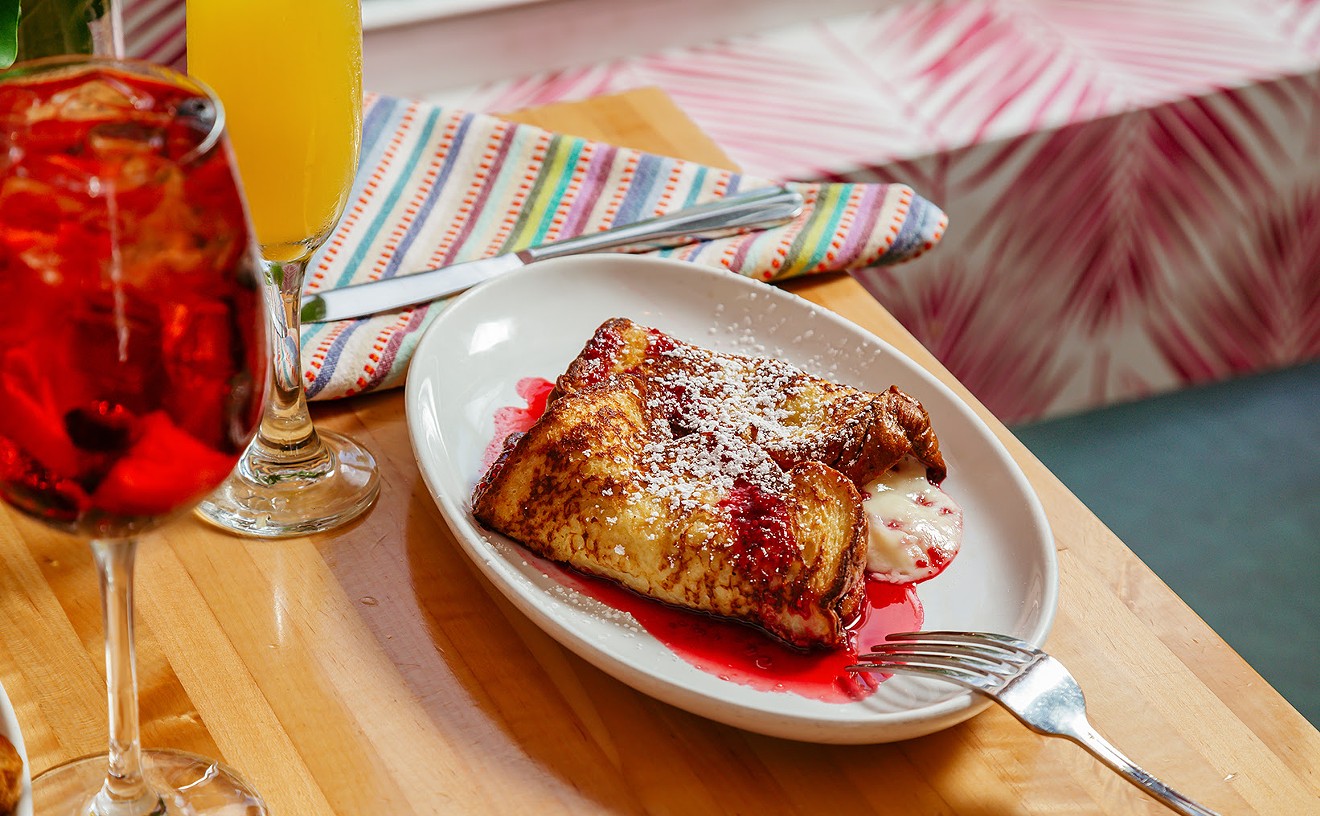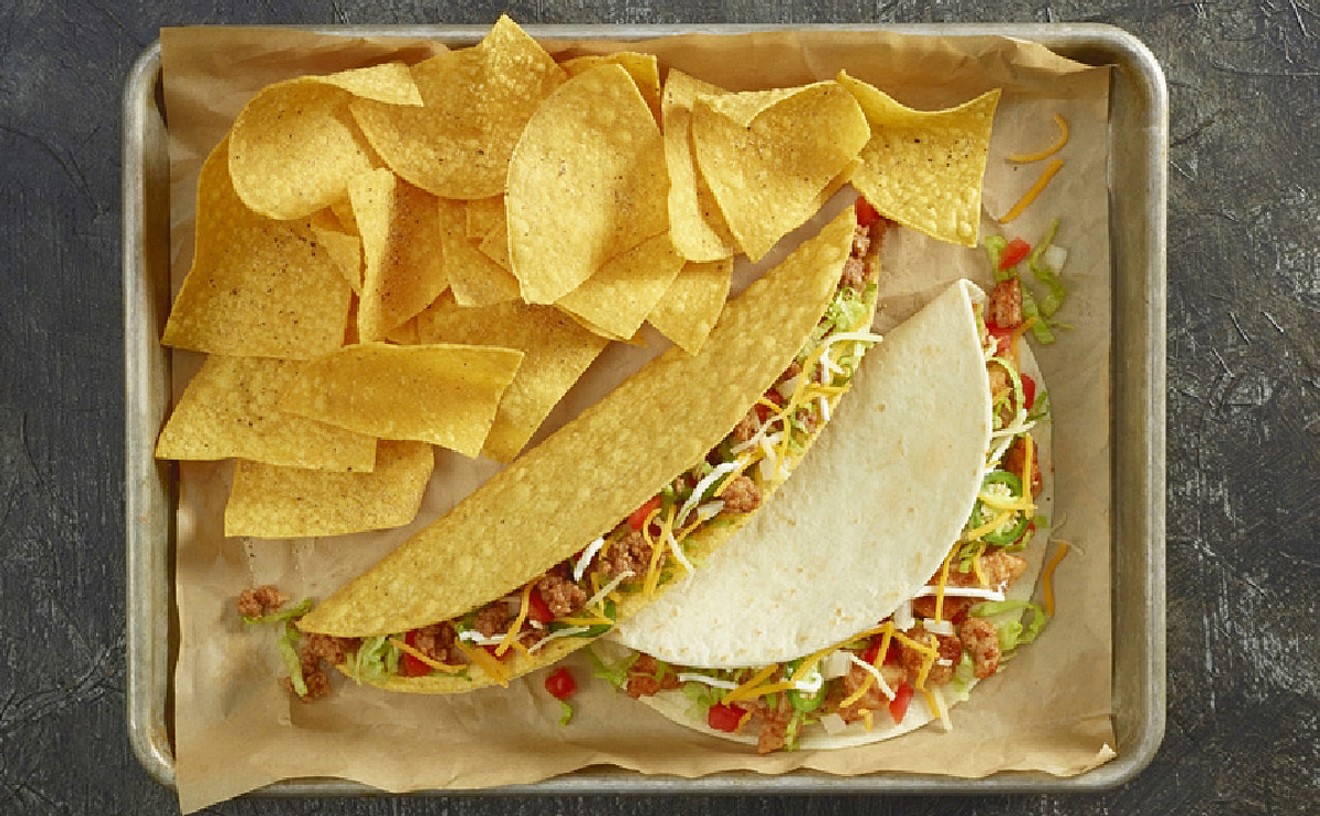The proof of the pudding can be found at three-month-old L.E. Tapioca & Sandwich, though the tapioca in the name doesn't refer to pudding but to bubble tea, a Taiwanese drink (also called boba or pearl tea) that has been wildly popular since the late 1990s in American cities with large Asian populations. Otherwise, the fare at this snack shop is limited to just one other item: Vietnamese sandwiches. But both the boba and the sandwiches are tasty enough, and unique enough in Miami, that they're worth hunting down.
And hunt you will. Tucked next to a computer parts warehouse, the tiny eatery does have a sign that reads "Tapioca," but perennially drawn window blinds give it the appearance of a drug drop. Inside, the look is barely more encouraging. The Asian/Appalachian décor consists of two large and very noisy old refrigerators, a pile of gilded plastic Asian rubble (apparently good-luck gifts given for the eatery's opening) on the floor, and several fruit posters Scotch-taped to the walls. The only upscale touch is a wide-screen TV set, tuned to sports. There are also two tables, but you'll have to remove the cook/proprietor's financial record books and other clutter from the tabletops, and unstack a few chairs, to dine in. Do take out.
And don't be discouraged. The bubble tea is wonderful here, especially the flavors that are actually tea-based. Though the drink, originating in Taiwan in the 1980s, began as a fruit-infused variation of iced tea, the name "bubble tea" is now used generically to describe any cold drink that contains large (just over a quarter-inch in diameter), chewy pearls of black tapioca. L.E. Tapioca's 21-flavor selection includes numerous tea-free fruit flavors, like tangy-sweet passion fruit, as well as odd Asian favorites like taro — whose unique nutty, sweet-potato richness is, in fact, very appealing. But the Thai milk tea, recommended by the barely English-speaking Vietnamese cook as "much better than the regular" dairy-free Thai tea, was plenty rich enough for my more refreshment-craving tropical American palate, and more satisfyingly assertive.
A food-nerd note: Bubble tea's most obvious bubbles are its big tapioca balls. But historically boba's bubbles, predating the tapioca, were tiny ones caused by vigorously shaking the drink. Some of today's bubble tea establishments skip the agitation, but L.E. Tapioca gives each drink order major blender time. Although the tiny blender bubbles vanish long before the six hours it takes the big tapioca ones to begin deteriorating, a take-out order was double-bubbly enough several hours later to seem like both a drink and a solid meal.
That does not mean, however, one should ignore the Vietnamese sandwiches. Arguably the most positive multicultural achievement of Vietnam's nearly 100 years as a French colony, L.E. Tapioca does them very well. The addictive creations are essentially elegant Franco-Indochinese sub sandwiches, whose Vietnamese name, banh mi, refers to France's main contribution: crisp-crusted baguettes. At Tapioca, they're fresh-baked. Inside is a smear of Vietnamese liver paté (used as a savory spreadable condiment, not a sliced cold cut), lightly soy-seasoned mayonnaise sauce, sliced cucumbers, cilantro, hot chilies (which can be omitted upon request), a hefty helping of sweet-sour julienned carrot-daikon salad — the element that, for most diners, makes the hoagies so habit-forming — and the central filling. Tapioca's menu lists eight choices, including Vietnamese bologna, a milder-than-usual pork sausage, and less carnivorous offerings like fried egg and slow-cooked tuna.
But only two possibilities were available on either of my two visits: barbecue pork and mixed cold cuts. Although the latter supposedly includes Vietnamese bologna, the bologna-only sandwich was not available. Don't ask why. I did, and was told, "Today somebody order it." Get to Tapioca first thing in the morning, and perhaps you'll be that somebody.
Otherwise settle for the cold-cut combo, an interesting mix of Vietnamese mystery meats, including a sort of extra-gelatinous headcheese that tastes better than it sounds. And the pork, a warm filling of meat strips that had been marinated in a hoisin-based sauce, was savory, a little gristly on one visit, but still a winner. Unlike the normal practice at American banh mi outlets, sandwiches here are not preconstructed but made to order from scratch, very slowly and painstakingly so that each bite contains a thorough mix of exotic flavors. The waiting room could sure use some work, but the wait is worth it.









